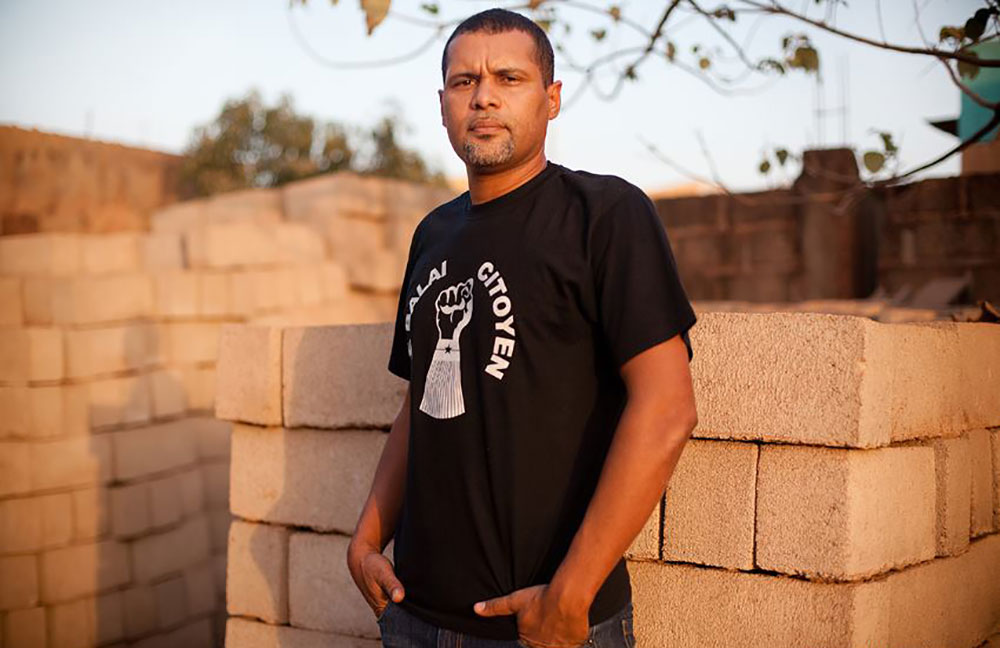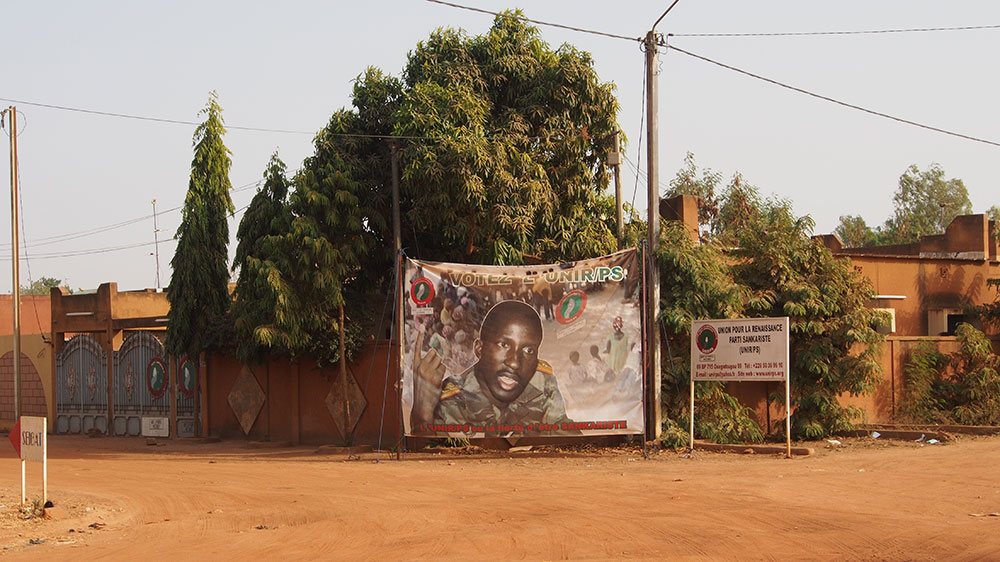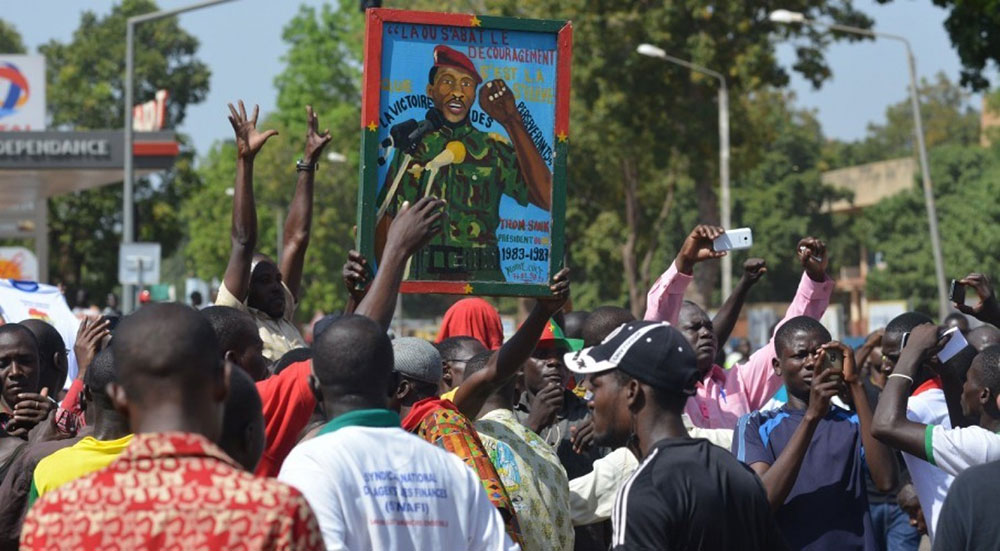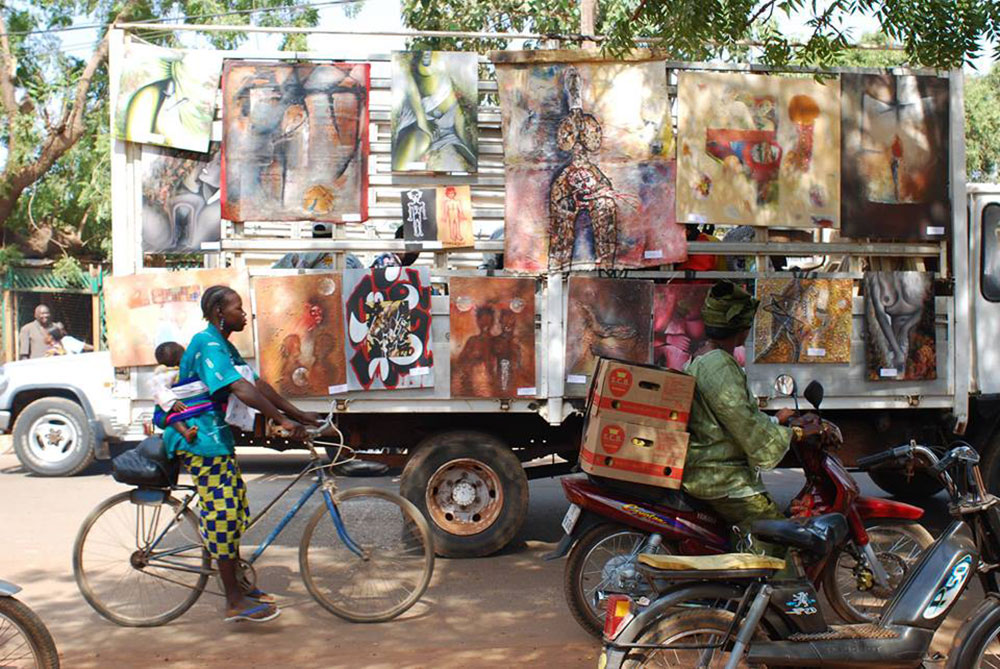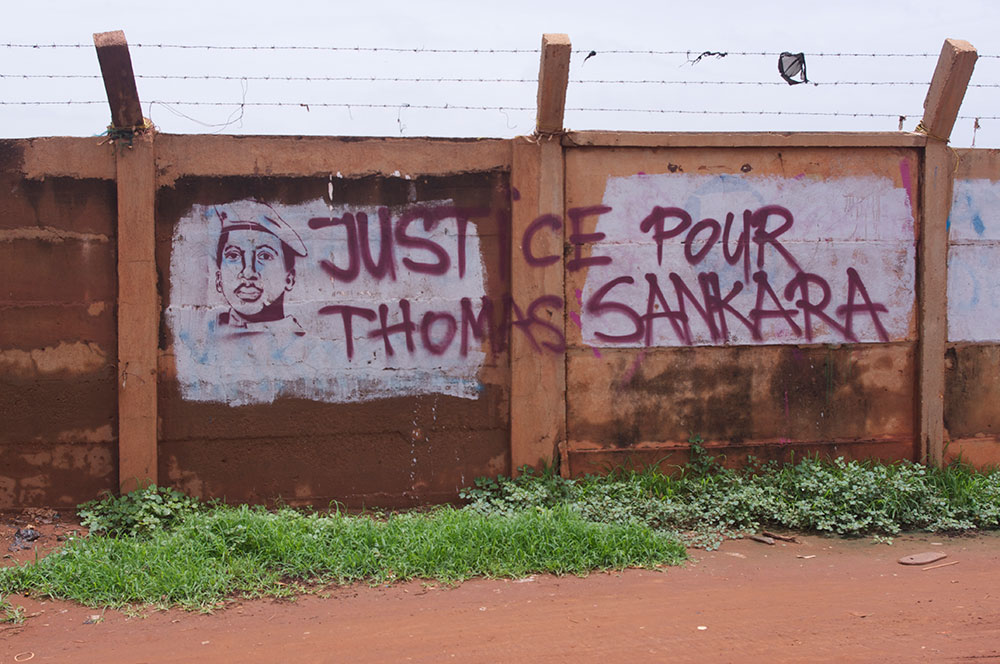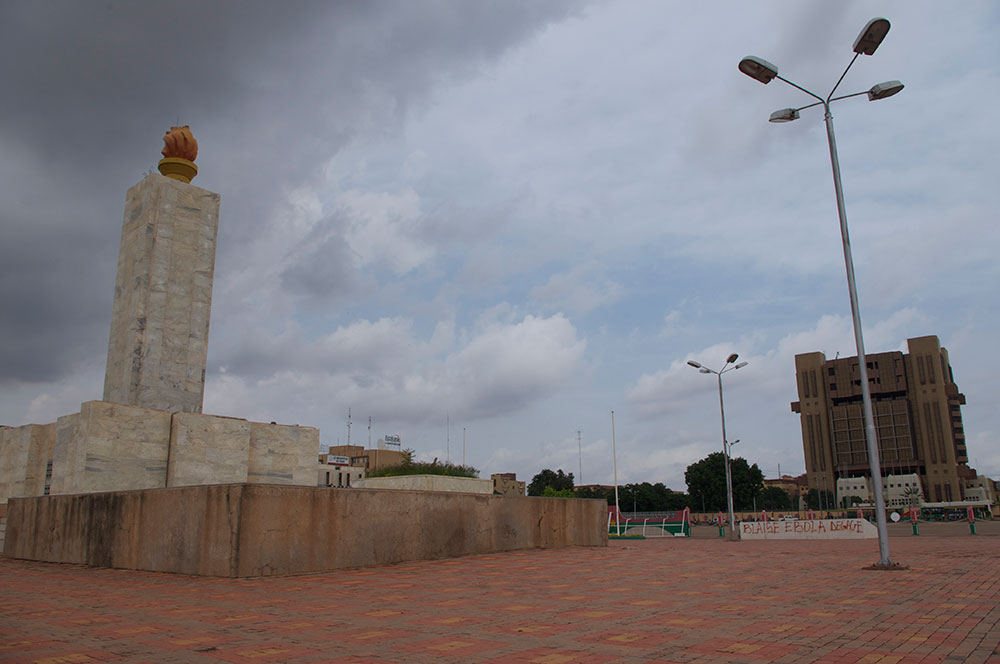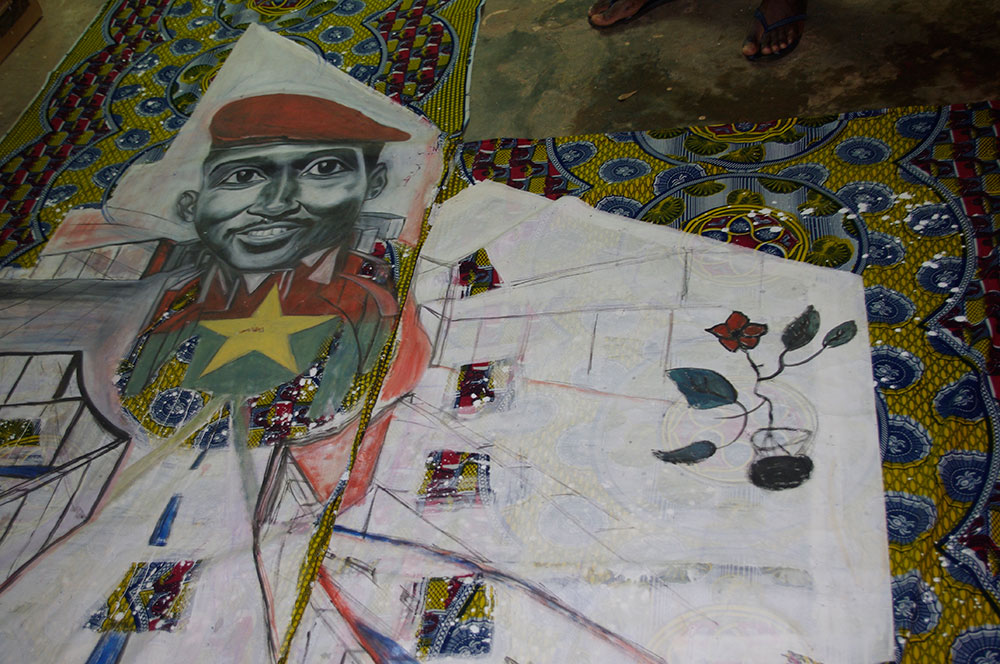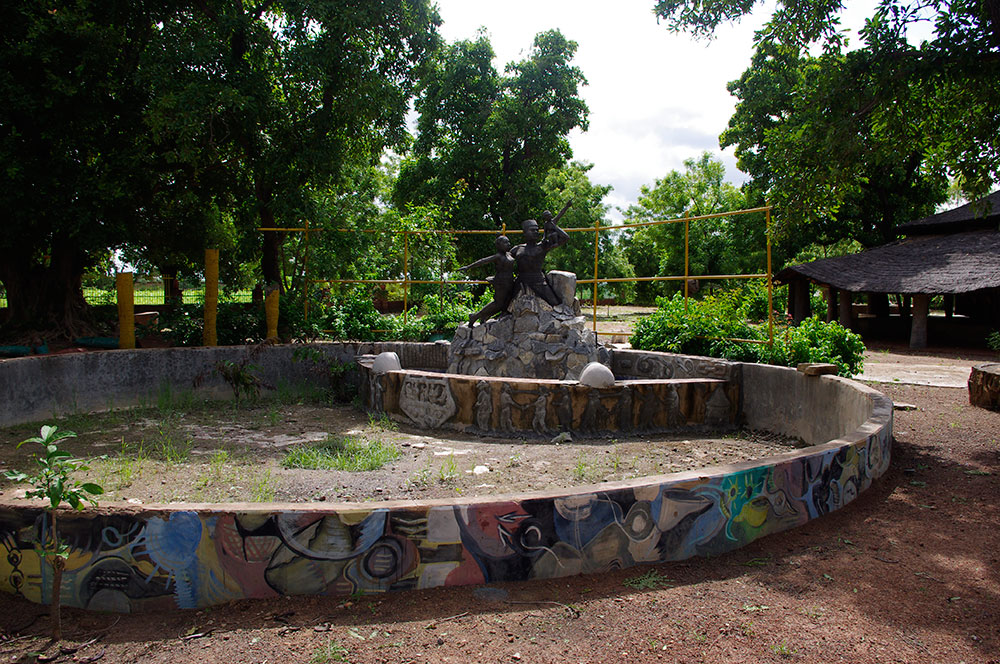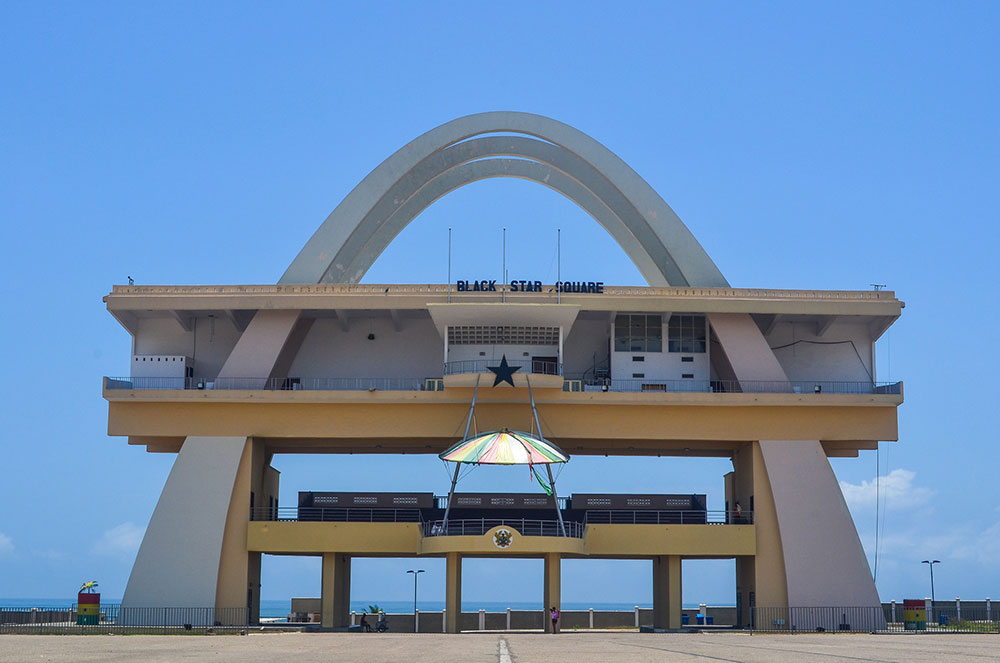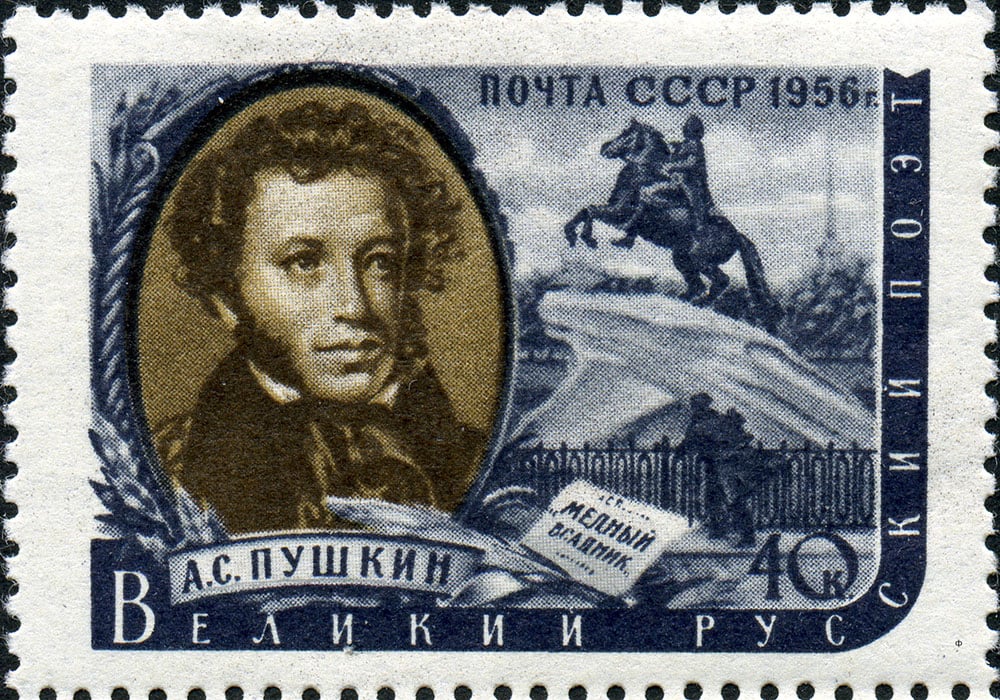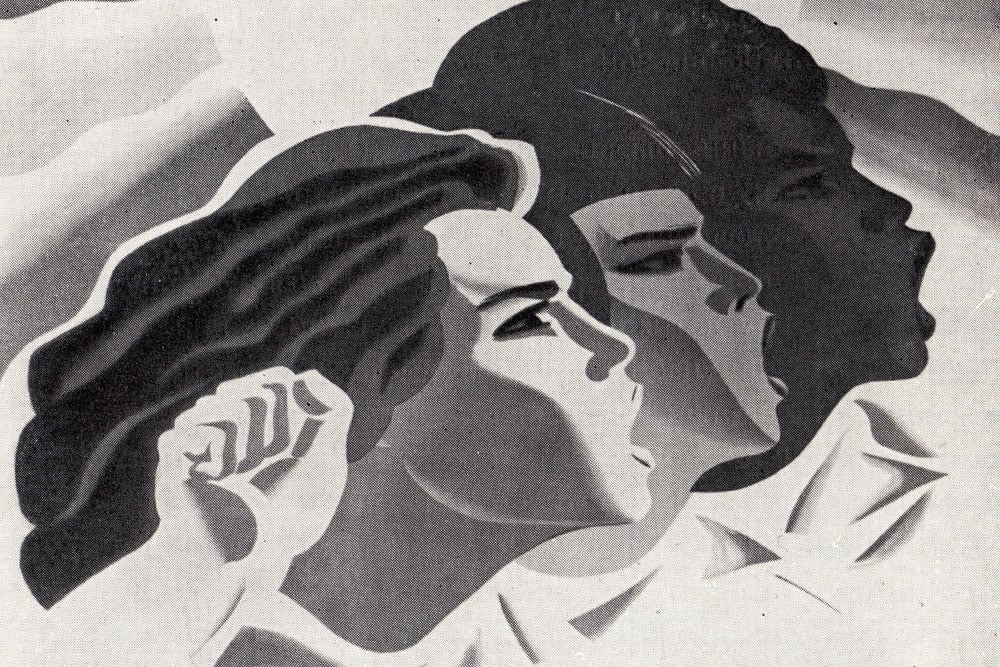Revolution 2.0: why the Cold War still matters for Burkina Faso’s contemporary artists
Red AfricaThe graffiti on Place de la Révolution — built in the Burkinabe capital of Ouagadougou in 1984 under the revolutionary Marxist leadership of Thomas Sankara — reads “Blaise Ebola Dégage!” (“Get lost, Blaise Ebola!”) A reference to the reviled president Blaise Compaoré, removed from power after 27 years following violent protests in 2014, it would be hard to find a more potent symbol of the reappropriation of Burkina Faso’s socialist cultural legacy by the nation’s young generation of contemporary urban artists.
For 20 years, an artistic and cultural protest movement that reconstructs the memory of Thomas Sankara has been developing on the margins of mainstream Burkinabe contemporary art, which these days is firmly entrenched in the global art market. These popular urban artists campaign for civil rights, and were intensely involved in the fall of Blaise Compaoré in the 2014 revolution. So who are they and how do they make use of both the figure of Sankara and seemingly outdated revolutionary socialist symbols in their art and struggle?
To understand the current reconfiguration of socialist symbols we need to go back to the country’s modern roots. The French colony of Upper Volta gained its full independence in 1960; by the 1980s, the country was one of the poorest in the world. As the global economic crisis of the late 1970s led previously socialist African governments to open up to capitalism, Upper Volta’s Thomas Sankara launched a Marxist coup in 1983: two decades after most of the continent’s leftist uprisings.
The 33-year-old soldier was a young and dynamic leader, popular in the army and lauded as charismatic and witty with an appreciation of women’s issues. It was in the military that he met his best friend Blaise Compaoré — the man who would later betray him. Following his involvement in popular protests in 1983, Sankara launched a coup. A highly educated man familiar with the works of Franz Fanon and Julius Nyerere, Sankara took up Marxism-Leninism as a doctrine, as Marien Ngouabi in the People’s Republic of Congo or Mathieu Kérékou in Benin had before him.
Sankara announced a revolutionary cultural policy for the newly renamed nation of Burkina Faso (“Land of Honest Men”). Monuments glorifying the masses and their “genius artists” were built in the centre of Ouagadougou: the Place des Cinéastes or the Monument de la Bataille du Rail, designed by Ali Nikiema and Ky Siriki. Like many other African public art projects of the period, Place de la Révolution was built with the cooperation of the North Korean Mansudae Art Studio in a recognisably Socialist Realist style, its frescos adorned with peasants. Symbolising a new kind of wide open public space, Sankara used it for political rallies and speeches.
Sankara was famously humble: he set his presidential salary at $450 a month and considered air conditioning an unjustifiable luxury
The influence of Soviet official culture looms large over the period. In Ouagadougou as in Moscow, revolutionary orchestras played to the official propaganda of the government. The canonical revolutionary iconography of the socialist fist, photomontages showing Sankara and his people marching side-by-side and mass demonstrations were also representative of Burkinabe art during in the 1980s.
One of the most important cultural events during the Sankara years was FESPACO, a Pan-Africanist film festival that has been described as Sankara’s attempt to formulate a personality cult. Famously humble — he set his presidential salary at $450 a month and considered air conditioning an unjustifiable luxury — Sankara always opposed the notion that a cult grow up around him. But his charisma and popularity were such that even in his modesty he became a kind of living legend. At the height of his popularity, he was betrayed by Blaise Compaoré, now cooperating with the French state. In assassination he became a mythic figure.
Prophet, martyr, model: Thomas Sankara, the “African Che Guevara” betrayed and assassinated just four years into his rule, is little by little coming back into favour among a young generation of urban contemporary artists operating on the margins of both the social order and the art market.
These artists have been consulting archives, reading books about the Sankarist Revolution, listening to the fallen leader’s speeches. They are opening the road to neo-socialism for Burkina Faso: Révolution 2.0, in the new context of the “African Renaissance” proclaimed by politicians in Senegal, among others. In different ways they use the figure of Sankara in their art to catalyse their hopes for a better future, one of political and societal change.
In 2013, musicians and activists Smockey and Sam’sK Le Jah created the Balai Citoyen (Citizen’s Broom), an unofficial association of artists, musicians and young intellectuals dedicated to “sweeping away” the corrupt Compaoré regime. Balai Citoyen draws from contemporary African contentious politics — its founders were inspired by Y’en a Marre (Fed Up), a protest movement in Senegal that similarly grew out of the local rap scene — while maintaining a specifically Burkinabe, Sankarist edge. Sam’sK Le Jah, for instance, received his political education as a child in the Pioneers of the Revolution, Sankara’s youth wing.
The choice of Place de la Révolution as the central meeting place for political demonstrations and mobilisations — and for free concerts organised by Smockey that draw crowds of thousands each time — is also key in this regard. Under Compaoré, public gatherings were forbidden on the square, which had taken on the more reactionary title of Place de la Nation. It was through its efforts to recreate a public space and voice, whether through social media, concerts or debates, that Balai Citoyen played a significant role in the 2014 overthrow of Compaoré.
The Cold War, with its heroes and villains of revolution and counter-revolution, echoes on. Socialism is not dead in Africa: it is being renewed
Burkina Faso has not experienced stability since 2014: Compaorist forces launched an abortive coup in late 2015 and the nation is once again in a state of transition. There will be no grand-scale cultural revolution like that initiated by Sankara for today’s Burkinabe. The time for reconfiguring the entirety of a nation’s political imagination has perhaps passed, for now. Yet as Balai Citoyen proved in 2014, the Sankarist legacy will continue to prove fertile ground for artistic responses to contemporary crises.
And perhaps this is not just a matter of Burkinabe history; perhaps Smockey et al are indicative of a broader African trend. In 2010 in the Jardin des Arts in Ouagadougou, the artist Caszib built a miniature monument referencing the African Renaissance Monument in the Senegalese capital of Dakar. Like Place de la Révolution, the bombastic, 50-metre Senegalese bronze was built with the help of the North Korean Mansudae Studio, and for better or worse recalls the muscular heft of Stalinist statuary. Now in a quiet corner of the Burkinabe capital, the theme is taken up, refashioned, tucked away. But crucially, the socialist stylistics remain. The Cold War, with its heroes and villains of revolution and counter-revolution, echoes on. Socialism is not dead in Africa: it is being renewed.
Who’s who in the new artistic scene of Burkina Faso
Smockey
Rapper Smockey named his last album Prévolution and now travels the world attending festivals and conferences where he speaks about the hopes of the Burkinabe and their thirst for democracy and civil rights. Back in Ouagadougou he has set up an independent record label and runs his own studio. In his own words: “I’m neither rebel nor a revolutionary because no revolution has ever worked. They all became dictatorships. Revolution is a concept, a state of mind. My strategy is to be free. I’m a citizen-artist, a part of a movement.” While he often refers to Sankara’s legacy of Pan-Africanism and anti-corruption, he does not make the mistake of idealising history.
Vivien Sawadogo
Vivien Sawadogo is a political photographer who documented the protests of 2014. For her, Place de la Révolution is central to the political consciousness of the Burkinabe. “To my mind, this place is the place for all Burkinabe to express their disapproval. It reminds us of the father of our revolution, Thomas Sankara, who made his speeches and passed his judgements here. It is the place for freedom of speech.”
Boureima Ouedraogo
Boureima Ouedraogo, also known as Bouk, is a talented sculptor who is inspired by the socialist revolution’s legacy on women’s rights: Sankara was a fierce advocate of women’s rights, appointing women to high governmental positions and outlawing polygamy, female genital mutilation and forced marriage.
This special report coincides with the Red Africa season running at Calvert 22 Foundation, from February 4th to April 3rd, Wed-Sun 12pm-6pm, 22 Calvert Avenue, London E2 7JP. Further details at Calvert22.org

